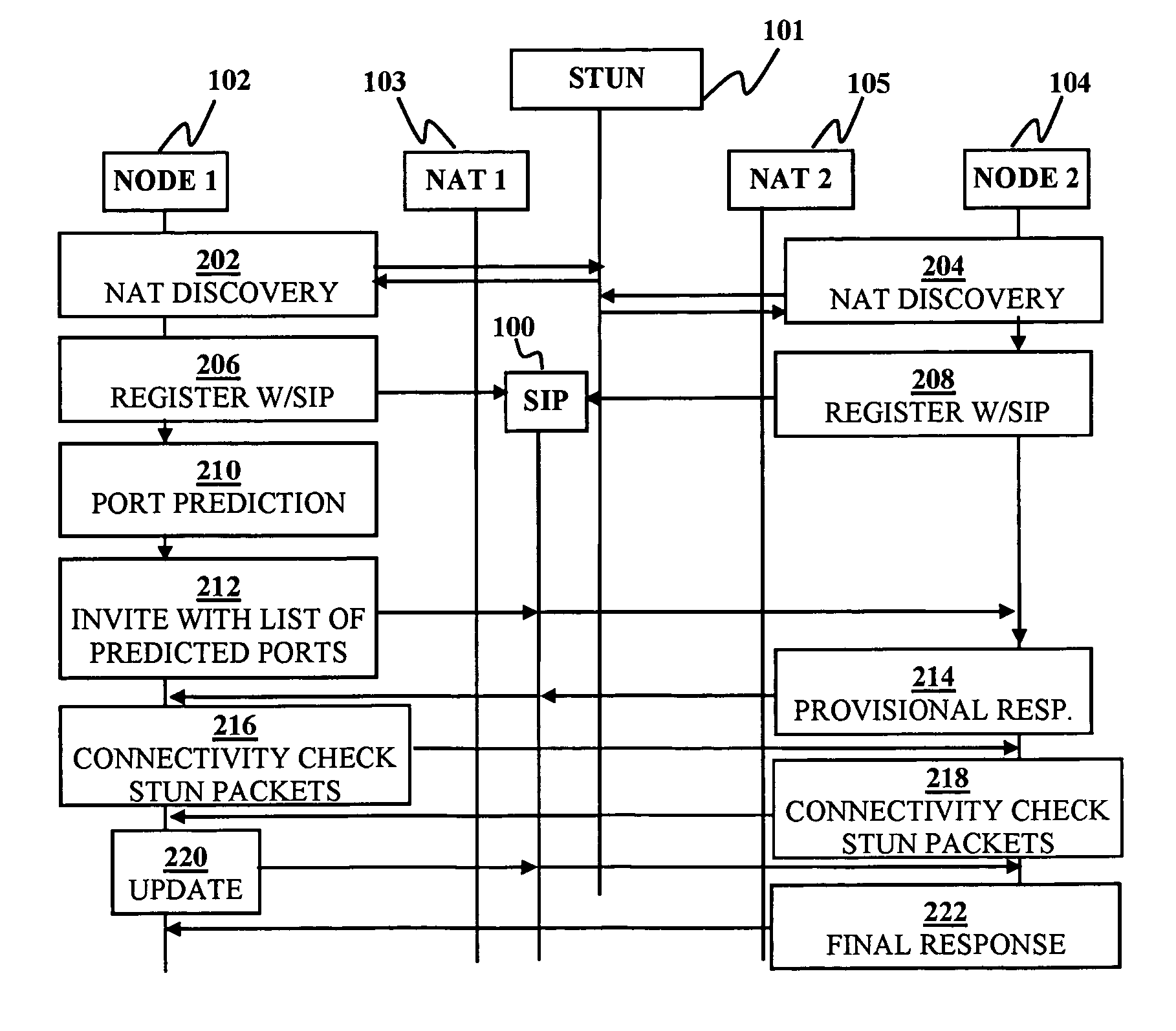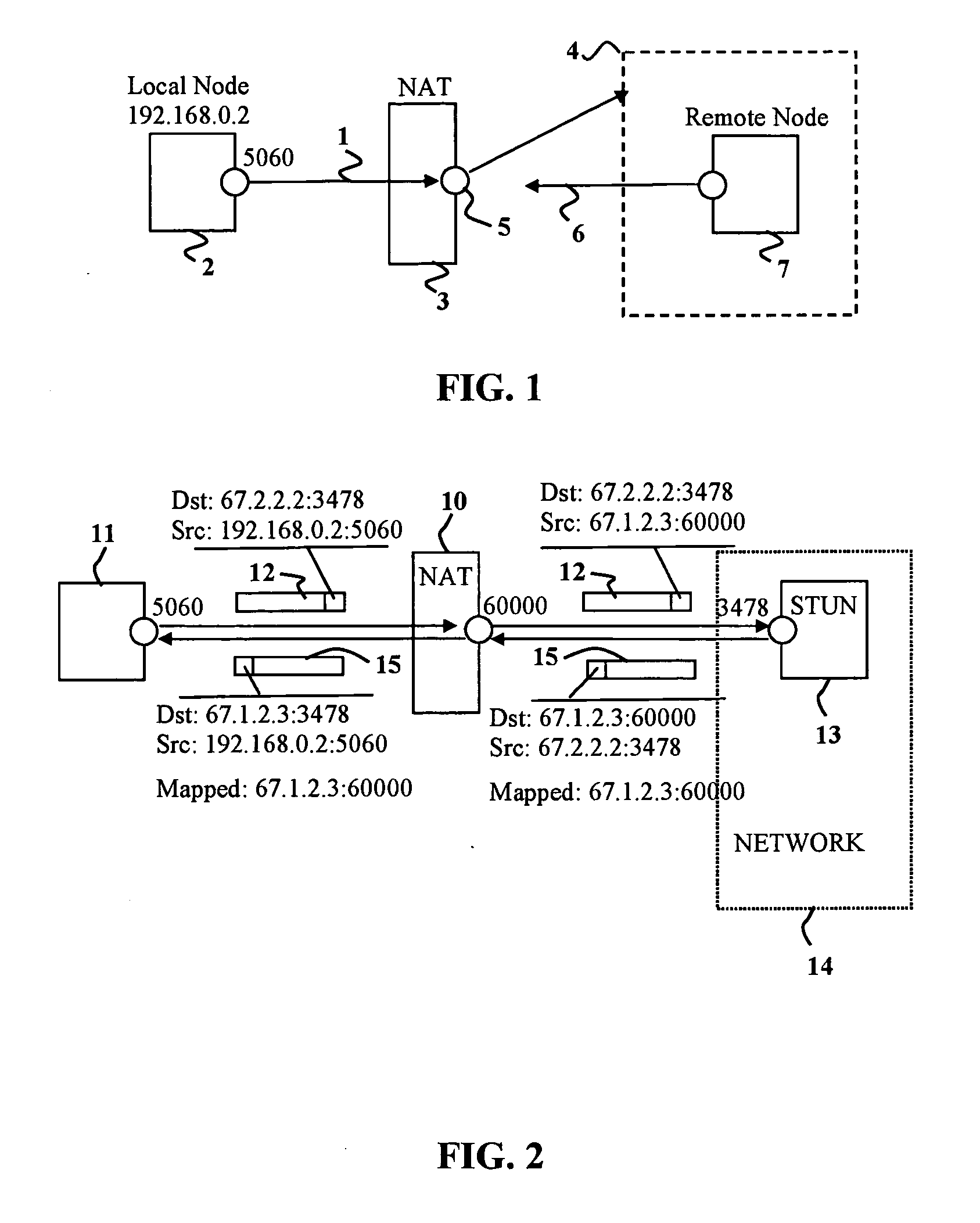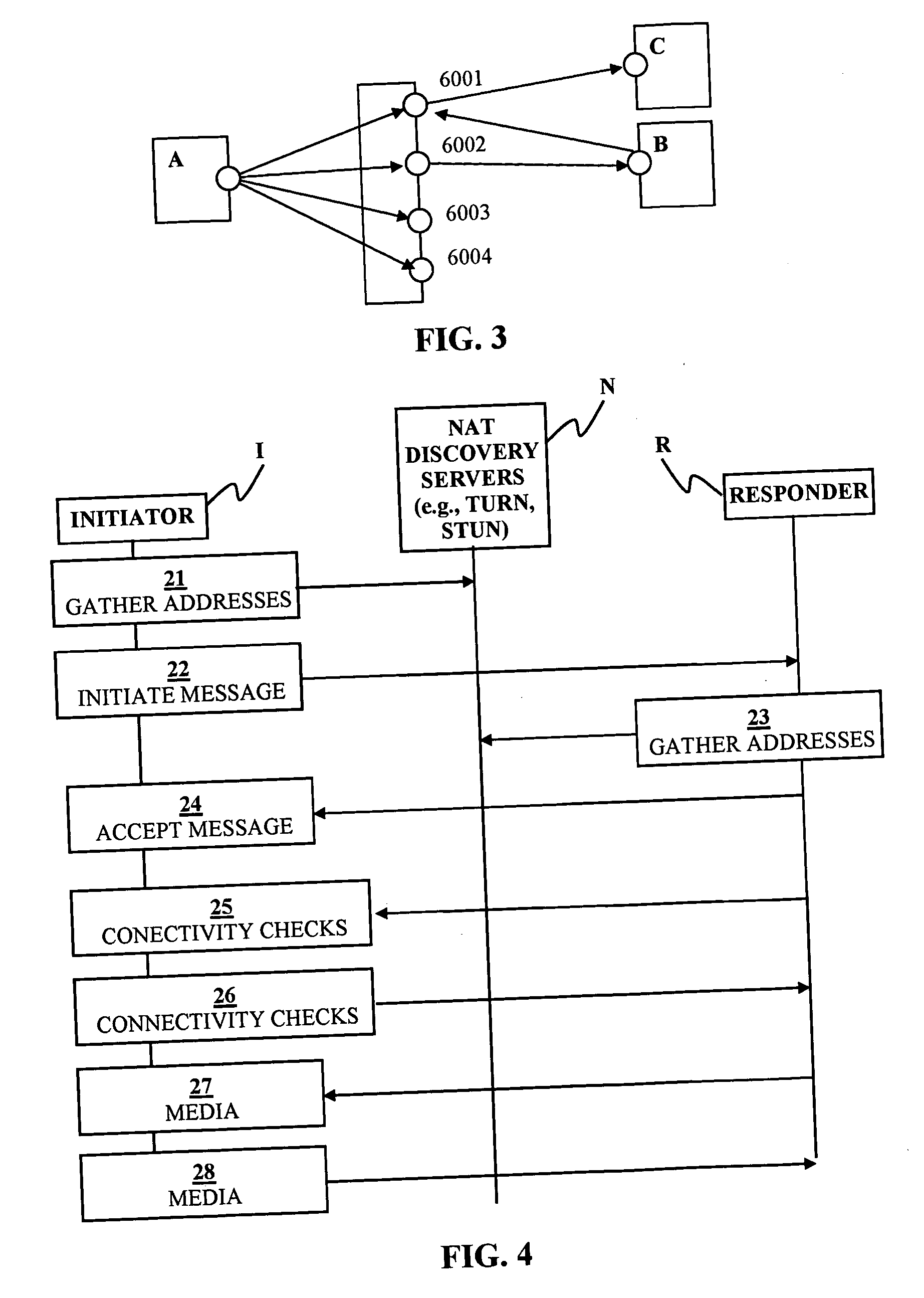Peer-to-peer communication traversing symmetric network address translators
a network address translator and peer-to-peer communication technology, applied in the field of computer networks, can solve the problems of not being able to meet requirements, not being able to achieve significant side effects, and not being able to support users who are experiencing trouble with configuration for various nats
- Summary
- Abstract
- Description
- Claims
- Application Information
AI Technical Summary
Problems solved by technology
Method used
Image
Examples
Embodiment Construction
[0048] Although the following detailed description contains many specific details for the purposes of illustration, anyone of ordinary skill in the art will appreciate that many variations and alterations to the following details are within the scope of the invention. Accordingly, the exemplary embodiments of the invention described below are set forth without any loss of generality to, and without imposing limitations upon, the claimed invention.
Terminology
[0049] As used herein, the following terms have the meanings shown in Table I below.
TABLE Inatted nodeA node behind a NAT.client-serverA network architecture model where all clients connect to acentral server. (ex. Web (HTTP) service, etc.)peer-to-peerA network architecture that does not depend on a centralserver. Each client (peer) directly connects to other peers.(ex. DHT, VoIP, file sharing system, etc.)transportA set of IP address and port number.addressVoice overA technology enabling routing of conversations over theIP ...
PUM
 Login to View More
Login to View More Abstract
Description
Claims
Application Information
 Login to View More
Login to View More - R&D
- Intellectual Property
- Life Sciences
- Materials
- Tech Scout
- Unparalleled Data Quality
- Higher Quality Content
- 60% Fewer Hallucinations
Browse by: Latest US Patents, China's latest patents, Technical Efficacy Thesaurus, Application Domain, Technology Topic, Popular Technical Reports.
© 2025 PatSnap. All rights reserved.Legal|Privacy policy|Modern Slavery Act Transparency Statement|Sitemap|About US| Contact US: help@patsnap.com



